Compromised Cases – EQUIA Forte® HT – Dr. Ahmad Fayad
Dr. Ahmad Fayad
As our population ages and the number of medications that cause xerostomia increases, we are faced with more carious lesions that are extremely deep and difficult to restore. Some of these patients cannot afford expensive and definitive treatment options.
The case presented on these pages falls into this category, and I’m sure it will be of benefit to any dentist looking to add a new technique option. This 68-year-old patient was on multiple medications and was an occasional smoker. Upon examination, she showed multiple deep root carious lesions; the deepest one was #11 and it was this one I wanted to save. The tooth was asymptomatic with an absence of any periapical pathology, 20% bone loss and negative mobility pockets all within normal limits.
Multiple treatment options, including implants and bridge work, were offered to the patient, who in the end could only afford what insurance covered, which was this conservative restorative option.
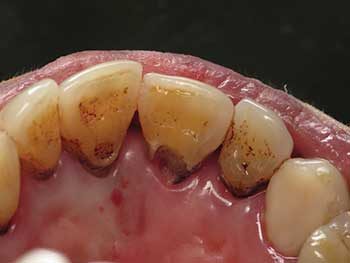
Visible lingual root caries on Tooth #11. Caries extends subgingivally and there is a risk of both tooth fracture and pulp involvement, which would create a need for root canal treatment.
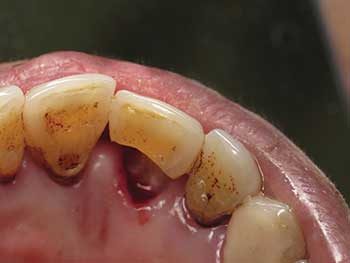
After the initial caries excavation, notice the depth of the lesion both pulpally and toward the root. Bleeding can impede vision and clear work, especially in the deep areas. Situations like this might steer novice dentists to have the tooth undergo unnecessary and expensive crownlengthening procedures that have an initially fair prognosis to start with.
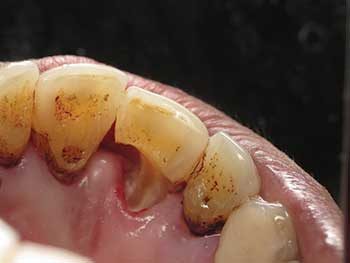
Bleeding was controlled by injecting anesthetic directly onto the lingual papillae. Caries excavation was completed with special attention not to expose the healthy pulp. At this stage, the tooth was ready for matrix band placement.
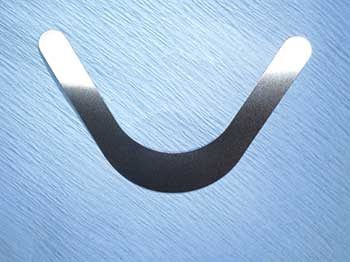
Dr. Ahmad Fayad believe the U-band from Greater Curve is the most practical matrix band in these situations. The band’s additional flare permits it to extend into deep areas for Class V isolation, which also provides additional visibility. It can also easily encircle oversized molars. The band has a thickness of 0.0381 mm and a center width of 9 mm.
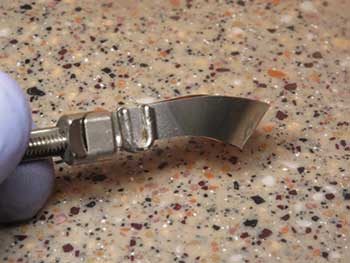
Notice the upside-down orientation of the Tofflemire. In some situations, this helps grip the tooth better. The apex of the U-shaped metal part of the retainer grips the tooth buccally.

The band in action. No need for crown lengthening or gingivectomy. A full seal and isolation are achieved.
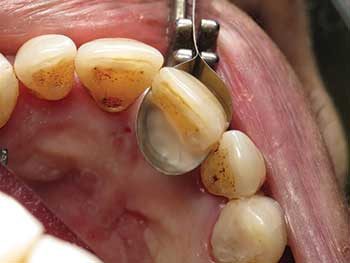
EQUIA Forte® HT from GC America was used as the restorative material. This glass ionomer hybrid contains embedded glass particles, which gives it a higher compressive strength, bulk fill properties and fluoride release. Conventional composite materials are contraindicated in these situations because of the difficulty of achieving a strong bond to cementum and a high chance for future recurrent decay.
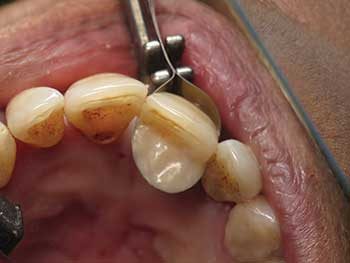
EQUIA Forte® HT was left for five minutes to fully set. Because this material is a pure glass ionomer hybrid, the preferred material in this case, it needs time to fully set. There is no need to light-cure in this case. EQUIA Forte® had also applied a thin layer of lubricant Vaseline on the inside of the matrix band to prevent the pull of the material when removing the matrix band.
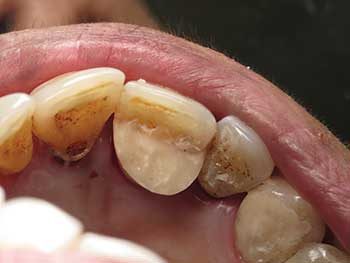
The overcontoured material will now need finishing and polishing only. The cavo-surface margin is usually smooth because the matrix provides a tight initial set.
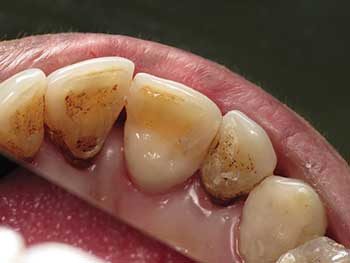
Final finishing and polishing, using your favorite burs. The canine in this picture had been restored previously, using the same material and technique.
